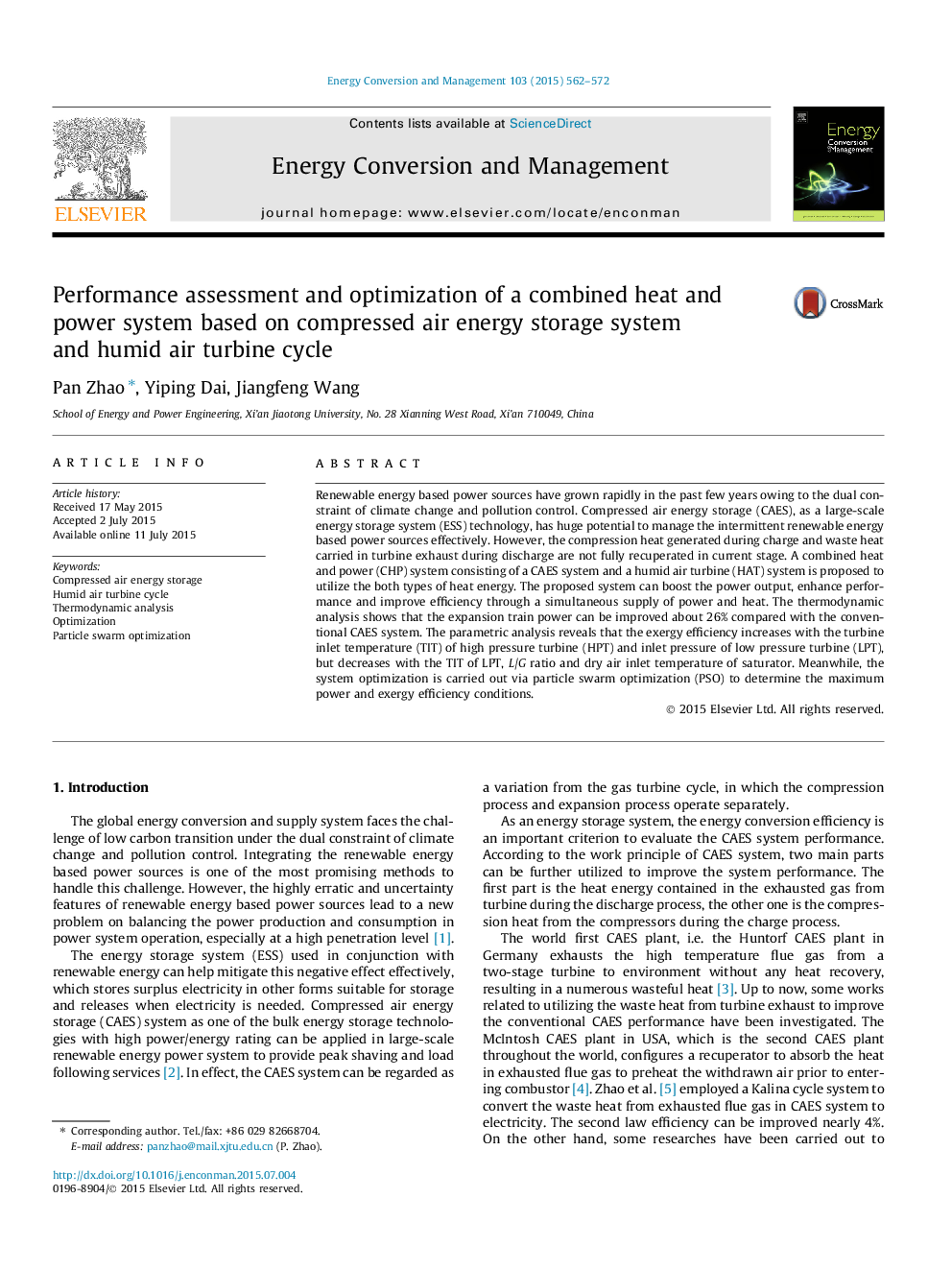| کد مقاله | کد نشریه | سال انتشار | مقاله انگلیسی | نسخه تمام متن |
|---|---|---|---|---|
| 771675 | 1462859 | 2015 | 11 صفحه PDF | دانلود رایگان |
• A combined heat and power system based on CAES and HAT is proposed.
• The design and modeling of the CAES–HAT based CHP system are laid out.
• The performance assessment of the proposed system is carried out.
• The system optimization is conducted to decide the maximum conditions.
Renewable energy based power sources have grown rapidly in the past few years owing to the dual constraint of climate change and pollution control. Compressed air energy storage (CAES), as a large-scale energy storage system (ESS) technology, has huge potential to manage the intermittent renewable energy based power sources effectively. However, the compression heat generated during charge and waste heat carried in turbine exhaust during discharge are not fully recuperated in current stage. A combined heat and power (CHP) system consisting of a CAES system and a humid air turbine (HAT) system is proposed to utilize the both types of heat energy. The proposed system can boost the power output, enhance performance and improve efficiency through a simultaneous supply of power and heat. The thermodynamic analysis shows that the expansion train power can be improved about 26% compared with the conventional CAES system. The parametric analysis reveals that the exergy efficiency increases with the turbine inlet temperature (TIT) of high pressure turbine (HPT) and inlet pressure of low pressure turbine (LPT), but decreases with the TIT of LPT, L/G ratio and dry air inlet temperature of saturator. Meanwhile, the system optimization is carried out via particle swarm optimization (PSO) to determine the maximum power and exergy efficiency conditions.
Journal: Energy Conversion and Management - Volume 103, October 2015, Pages 562–572
